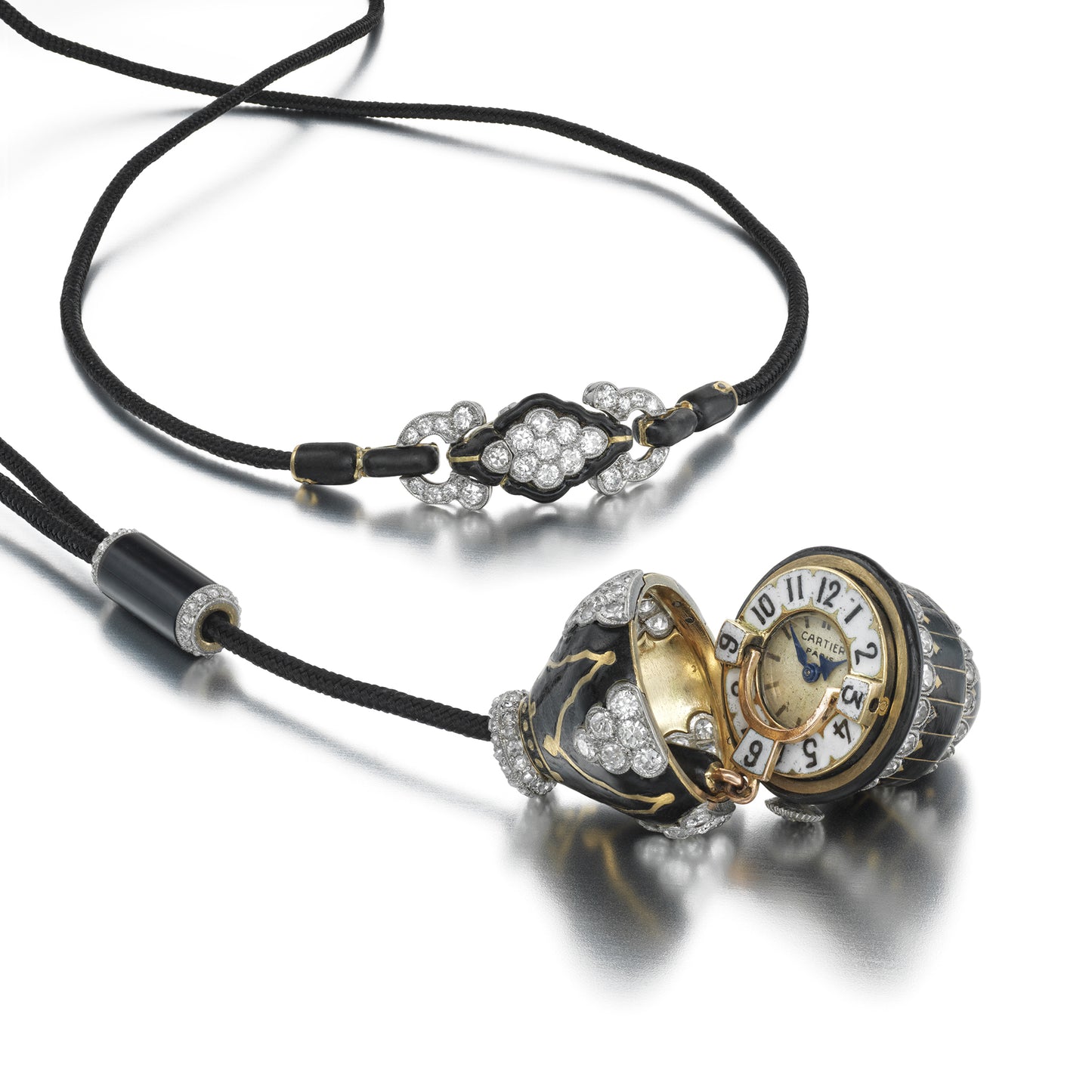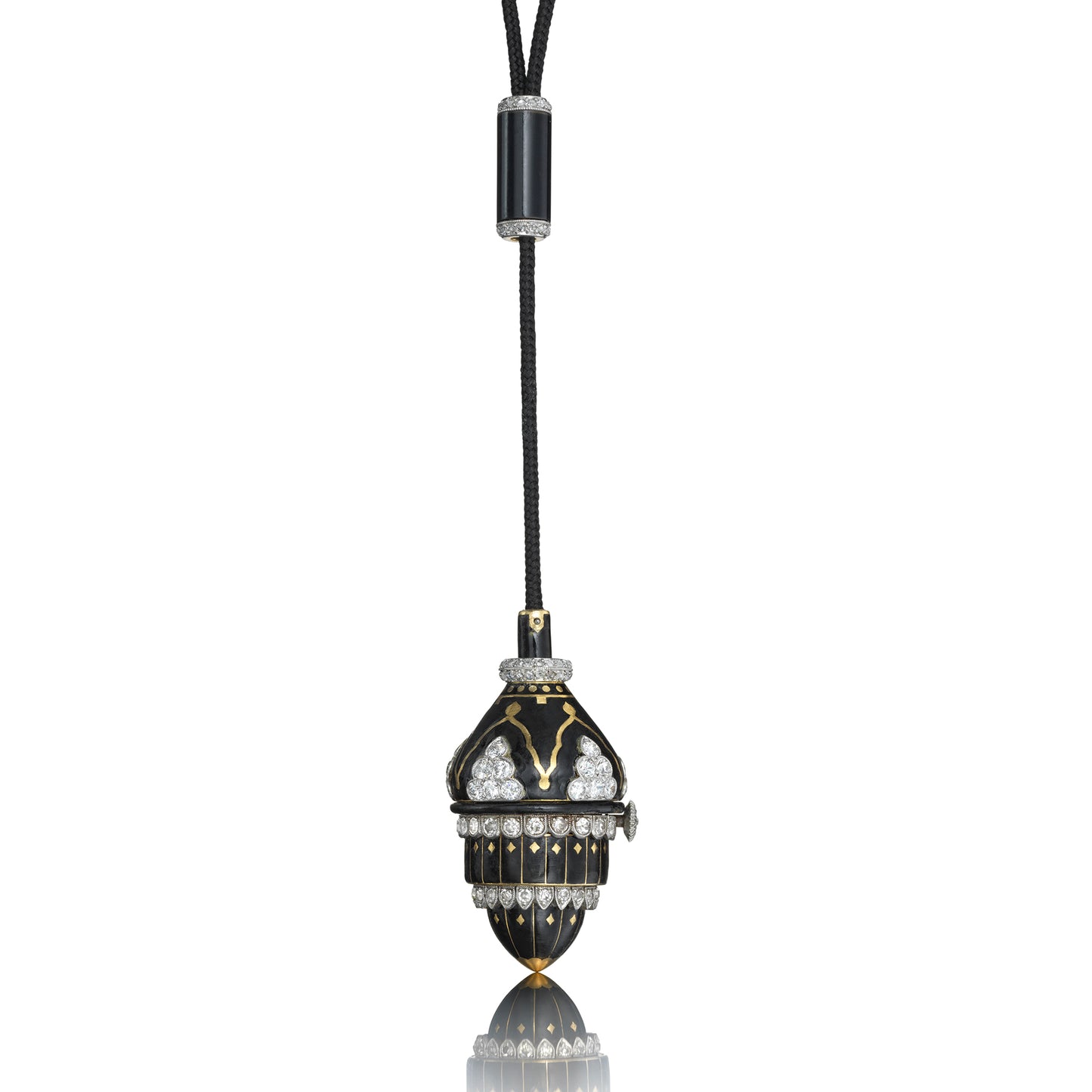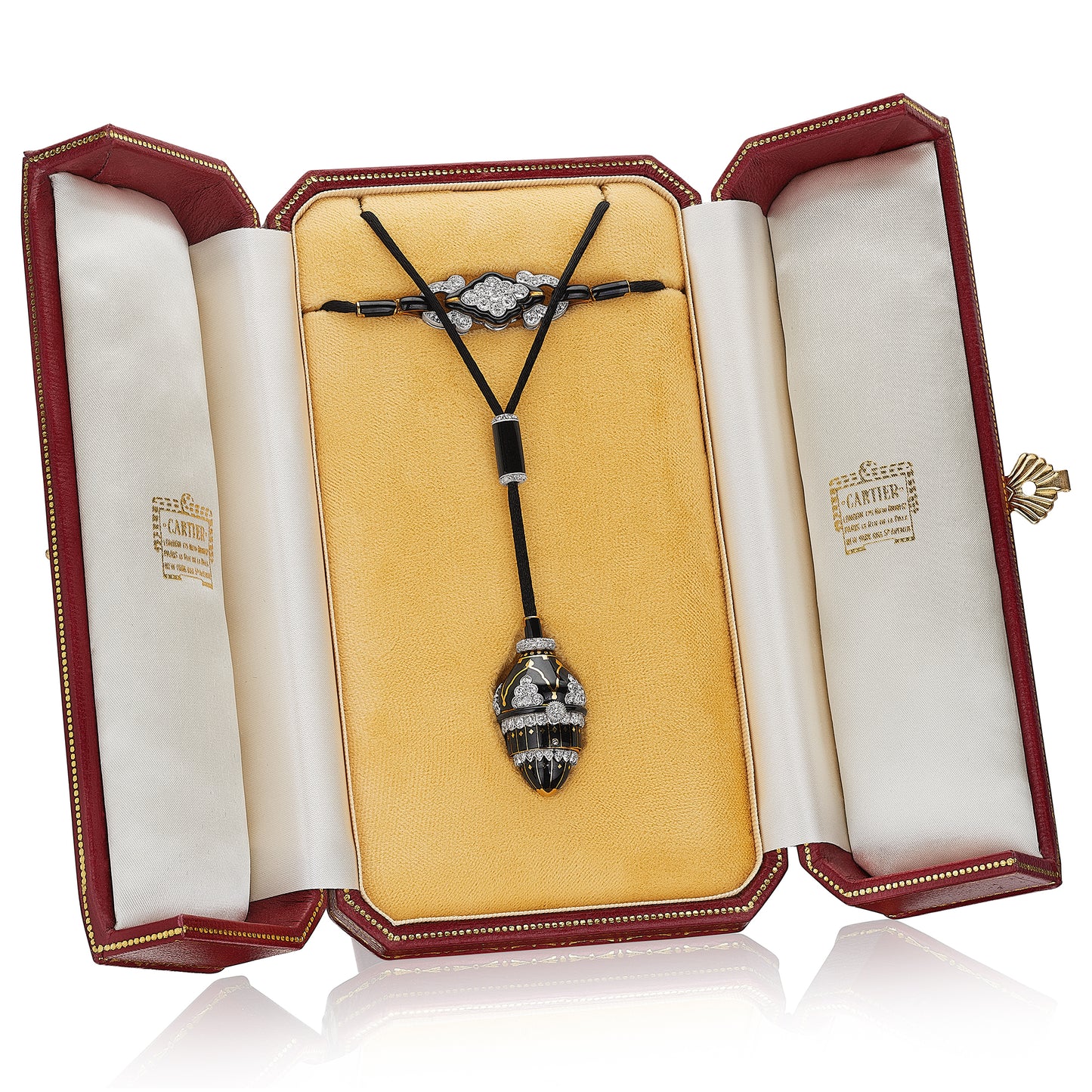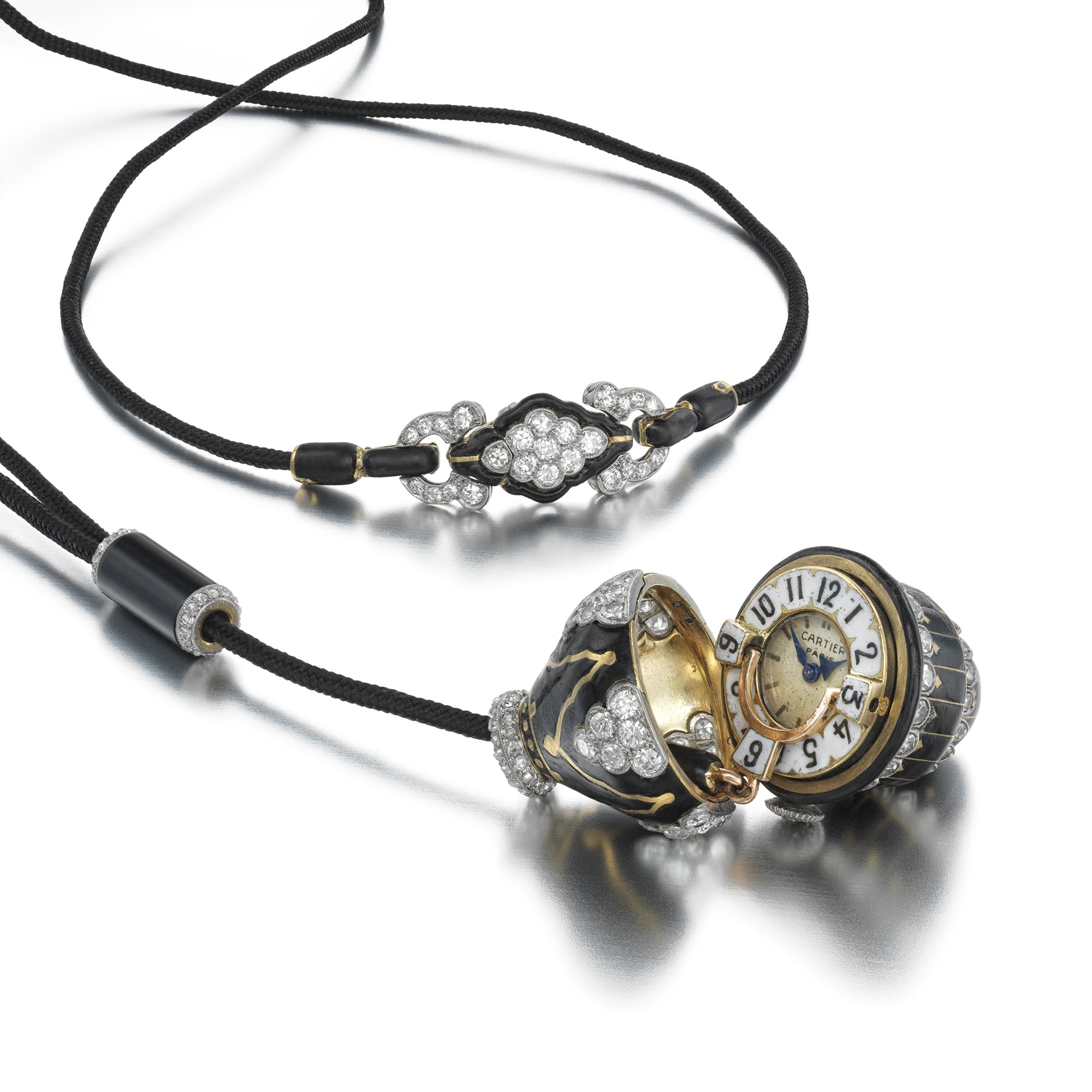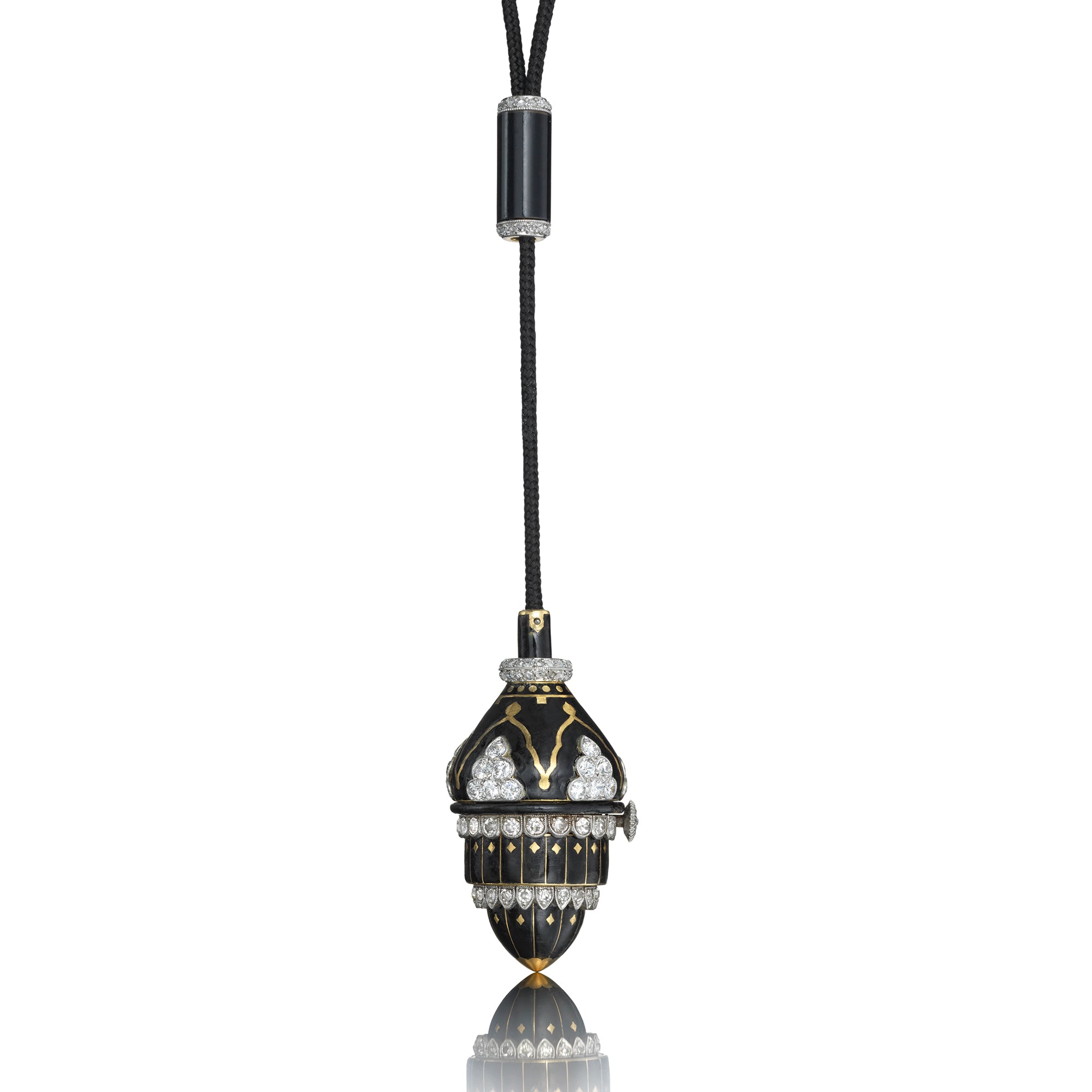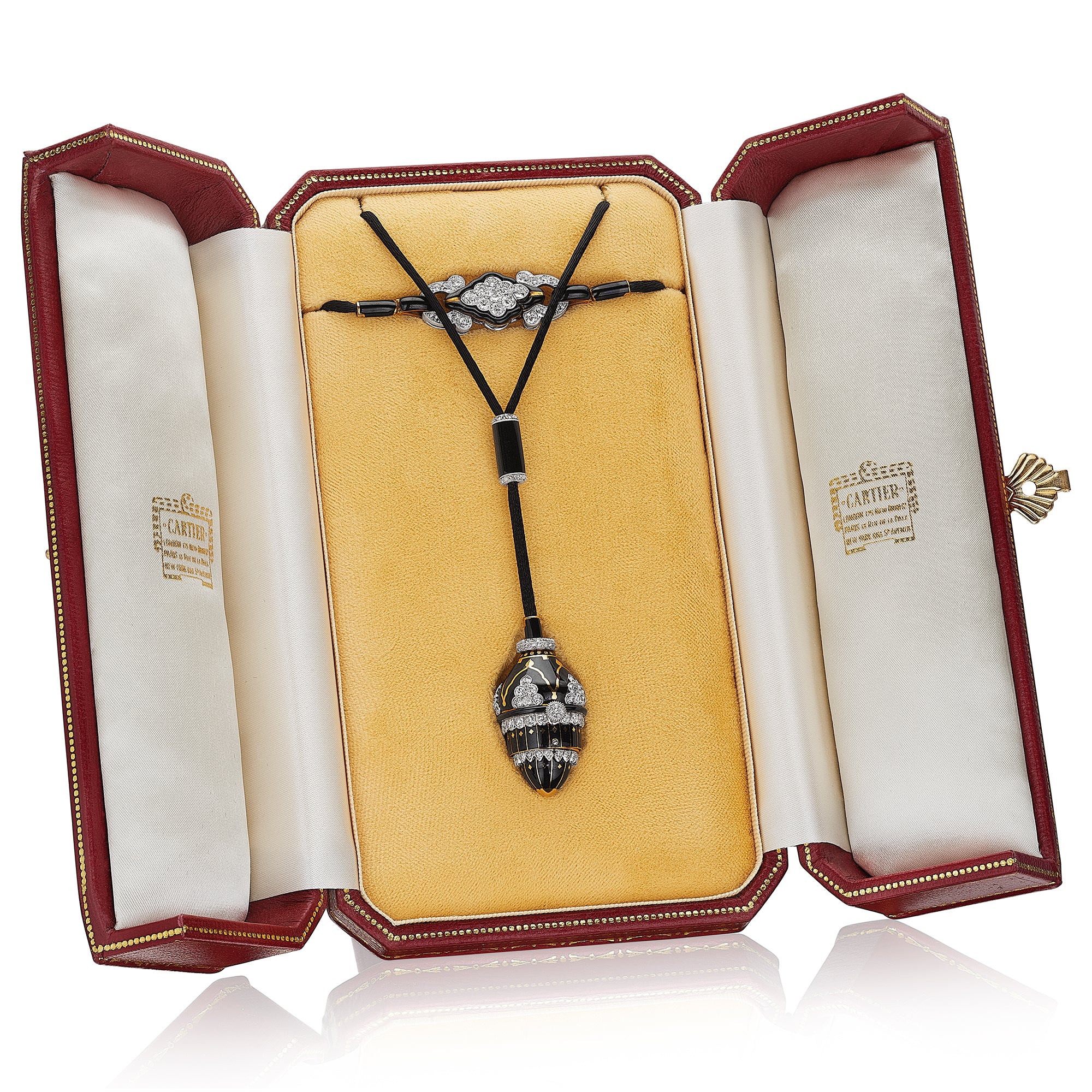Art Deco Acorn Pendant Watch by Cartier, Paris, circa 1925
Art Deco Acorn Pendant Watch by Cartier, Paris, circa 1925
SOLD
A concealed watch in the form of an acorn in black enamel with gold detail and single-cut and rose-cut diamonds, the top opens to reveal a circular dial with white enameled chapter ring, black enameled Arabic numerals and blued steel hands, suspended from a black silk cord with a black enamel and diamond cylindrical slide and clasp; mounted in gold and platinum, with French assay marks
- Dial signed Cartier and numbered
- Movement: European Watch & Clock, Co., 18 jewels, all adjustment
- Measurements: 4 x 2 x 2.1 cm, 1 5/8 x 13/16 x 7/8 inches, length: 47 cm, 18 1/2 inches
Additional cataloguing
Biography
Cartier was founded in Paris in 1847 by Louis-François Cartier. His three grandsons, Louis, Pierre, and Jacques, built the house into a famous international jewelry empire serving royalty, Hollywood stars, and socialites. Cartier has created some of the most important jewelry and objects of art of the twentieth century with many iconic designs such as mystery clocks, Tutti Frutti jewelry and the Panthère line. In 1983, The Cartier Collection was established with the objective of acquiring important pieces that trace the firm's artistic evolution. Today, Cartier has 200 stores in 125 countries.
Significance
At the turn of the century, pocket watches were the most popular watch form, as they had been since the sixteenth century. Cartier played with creating some pendant watches attached to brooches and even one on a pearl necklace, but the watches still very much adhered to the circular watch form and felt large for jewelry. With the advent of wristwatches by the end of the first decade and into the teens, the technology of clock mechanism advanced and reduced in size, allowing the exceptional designers at Cartier to experiment with the watch form, concealing it within jeweled creations.
Cartier began creating pendant watches in 1921 and Vogue proclaimed it all the rage. For the first time, instead of being used by women to mark time in the household, watches were created to accessorize the height of fashionable evening wear. By 1925, the pendant watch was considered more fashionable than the wristwatch.
This watch, in the form of an acorn, features gold and
diamond detailing echoing the form of a Persian mihrab, or prayer gate. Special attention was paid to the platinum stone settings, with some round and others pointed to create the illusion of a pear-shaped stone. The consideration of design in this watch is even extended to the diamond-set clasp, which would have been exposed by the new fashionable bobbed hair. The extreme length of this pendant was designed to flatter the long, fitted evening gowns of the era, and for the insouciant gesture of checking the time.
